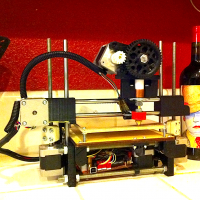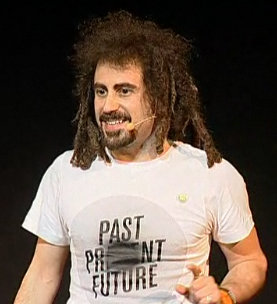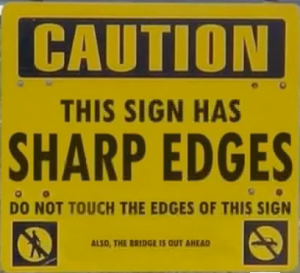…you’ll no longer be amazed!
What might seem incredible today will be quite natural to most of us five years from now.
Douglas Adams – author of the Hitchhiker’s Guide to the Galaxy – explained to us that Continue reading


What might seem incredible today will be quite natural to most of us five years from now.
Douglas Adams – author of the Hitchhiker’s Guide to the Galaxy – explained to us that Continue reading

Over half the world’s population now lives in an urban area, and 75% will call a city home by 2050. But not all cities are experiencing growth, some are actually shrinking.
Urbanized is a fascinating documentary about cities, looking at strategies behind urban design of some of the world’s foremost architects, planners, policymakers, builders, and thinkers. The film opened my eyes to several urban design projects around the world.
Housing, public transport, public space, people’s engagement, economic development, and environmental policy are universal concerns. Yet many of us feel that decisions on these issues are made by an isolated elite.
I feel that we all should be able to take part in these plans so important for our future life.

It’s remarkable that reports in the general media — including the numerous stories putting a gratuitous, how-the-mighty-have-fallen spin on the travails of Kodak — have had almost nothing to say about the condition or even the existence of its graphic communications product lines.
Patrick Henry, WhatTheyThink, January 20, 2012.
Oh yes, Kodak missed the opportunity to prosper from their innovations in digital imaging and the digital camera. So how come they didn’t see what was coming? I guess they were just too stuck in their old business model of making film that had made them fortunes over decades. When you’re feeling comfortable with the old and the old still brings in some money, it seems impossible to look up and get a grasp of the long view. At least not without taking help from a outsider that isn’t trapped in the present.
Another similar example is Nokia, who were so certain on their own technology and design that they ignored the iPhone as just a geeky gadget with no commercial potential. Frank Zappa and the Mothers of Invention met a similar reaction from a record company director – no commercial potential. The favorite act of that record company later ended up doing background singing for the Mothers!
In their time, Kodak used some of their money to become the main supporter of the College of Imaging Arts and Sciences at the Rochester Institute of Technology, and the RIT School of Print Media. This might have been a unplanned foresight of their more recent focus on digital production printing systems. Rumors say that Kodak will launch a newspaper version of the Prosper inkjet press that will run at 300 meters/min and will be able to print the impressive equivalent of 3,098 64-page tabloid newspaper/hour. Ironically, this may be another mistake, putting their hope to another industry that is reluctant to understanding the need for change. Most newspaper companies just don’t get it! It seems however like Kodak is making moves towards other business areas within printing and publishing, like magazines.
You can read more about Kodak’s reorganization on the web. Under the heading Leadership Insights you can find two informative videos.

An amazing look into the future when we can print any object at home. It will even be possible to print human organs for transplantation. I would say that this is a realistic view of the “Beam me up, Scotty” concept.
The first hobby machine being made available is called Printrbot:

http://web20classroom.blogspot.com/2010/11/why-are-you-life-long-learner-follow-up.html
Our ways of learning are changing, but it seems that not everyone is aware. Douglas Thomas and John Seely Brown describe in their new book A New Culture of Learning: Cultivating the Imagination for a World of Constant Change, how a new type of learning takes place without books, teachers and classrooms. It is a social phenomenon that emanates from the amazing interactivity we have acquired with the many new Internet tools like Wikipedia and Facebook. We meet with a new form of culture in which knowledge is seen as fluid and evolving, the personal is both enhanced and refined in relation to the collective, and the ability to manage, negotiate and participate in the world is governed by the play of the imagination.
Jane Hart describes part of this development in her Social Learning Handbook. Her strong statement is that Life in the Social Workplace is not something you just talk or read about; it’s something you do! She has created an interesting presentation entitled A new approach to workplace learning:
Youngme Moon who is the Donald K. David Professor of Business Administration and Senior Associate Dean at Harvard Business School has compiled an “anti-creativity checklist” that gave me a total flash back to my earlier employer. I believe I heard at least 80% of her sentences. Numbers 1-4 relate to colleagues which make them less relevant. Most of my colleagues were just as frustrated as I was. Number 11 is about underestimating your customers – They’re not ready for that, or That’s not what they’re asking for – I heard that just too often.
Please enjoy the video!
I just remembered a really inspiring talk at Guldäggsdagarna 2010. This was almost a year ago, but I believe it is still well worth sharing.

Click image to play video.
Faris Yakob was Chief Technology Strategist of McCann Erikson in New York, and is today Chief Innovation Officer at MDC Partners. In his presentation, Faris used a mind-provoking definition by Bran Ferren that technology is stuff that doesn’t work yet!
Faris referred to Douglas Adams, stating that
Please enjoy the video!
Moore’s law: page 26 in Deloitte – The 2009 Shift Index
Kryder’s law on computer storage costs: page 27
Gilder’s Law on cost per communication bit. Eventually the cost of a telephone call, or of a bit transmitted, will be “free.”
Media fragmentation by Millward Brown
PS – Can’t view flash on your device? View this post on a regular computer (Mac or PC).
Chris Anderson taught me a new concept: Crowd-Accelerated Innovation.
Three thing are needed for this:
This is most easily achieved by utilising web video such as YouTube, where it is possible to realise global innovation. It is however my strong belief that the concept of crowd-accelerated innovation is applicable also to smaller groups such as companies, universities and other organisations. There are several reasons against openness in many organisations; it may be fear (don’t upset the boss – I might lose my bonus), personal power (my knowledge gives me my position) or many other reasons. Real innovation is so much easier achieved in a truly open climate.
Watch Chris Anderson’s TED talk here:
I believe that the book as an artefact has a very strong notion with most people. “I would never read a book on a crappy screen” may still today be heard from a majority of people. IDEO has recently published a video showing three different concepts of future book design. Of course they are presented on an iPad-looking device. Watch this video and judge for yourself. My thinking is that we some time in the not so far away future will look at today’s books with the same kind of fascination we see the Dead Sea Scrolls.
The Future of the Book. from IDEO on Vimeo.
Seth Godin at Gel 2006 from Gel Conference on Vimeo.
Seth presents a long list of reasons why things are broken or merely poorly designed. Some broken things may be fixed, others not. It is as always very entertaining and rewarding to listen to Seth, but I especially like his discussion on things broken by purpose. It may be wise to realise that some stupid signs maybe were designed to grab your attention.
My favourite among his many examples is this sign:  |
Check out Seth’s Blog at http://sethgodin.typepad.com/